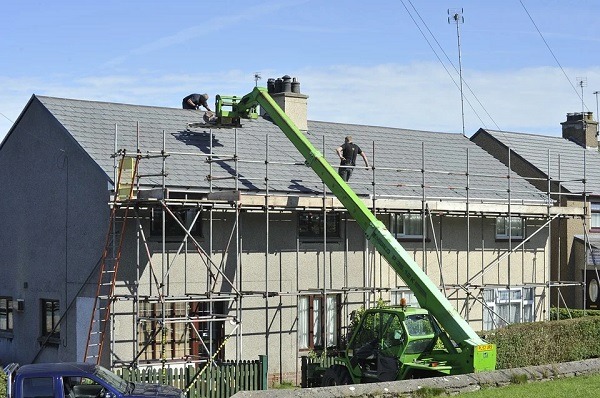Whether it’s extreme weather or age, sustaining damage to your roof is every homeowners nightmare. When your roof is damaged, your whole property becomes vulnerable to harsh weather conditions and further issues. And whether you’re doing it yourself or getting some professional roofing services to fix your roof, there are always safety hazards to be aware of. Here are some of the main ones and how you can avoid them.
The roof could collapse under your weight
A roof can have its weak points, especially if it’s old or your area is prone to strong winds and hailstorms. The problem is identifying them. Often you won’t know until your foot has fallen through the shingles. If your roof is weak in any area, it may not be obvious to an untrained eye, so you risk the roof collapsing under your weight when you walk on it.
The only real way to know if the roof is weak is to get someone trained to take a look. Luckily, a lot of roofing contractors offer consultations so that they can identify the extent of damage to your property.
Weather conditions
It’s important to remember that while you’re up on the roof, you’ll be more at risk to adverse weather conditions. This is because up on the roof you’re completely vulnerable to wind and rain, and can lose your footing relatively easily if the surface of the roof is slippery.
A best practice is to only go up on your roof when the weather is clear and mild to minimise chances of the weather causing an accident.
Poor ladder placement
You’ve got to make sure that everything is sturdy, most of all your ladder. If this falls or causes you to fall, you’ve got no hopes of inspecting or fixing your roof. So ensure that it’s secure and safe to climb before you get up it.
Misuse of safety equipment
Just because you’re using safety equipment doesn’t mean it’s guaranteed to keep you safe. It’s all too easy to rush setting up your safety equipment, or not read the manual so you know you’re doing it right.
Bad line of sight
From chimneys to ridge vents, your line of sight can be interrupted up on the roof. When you have a bad line of sight, it can be difficult to get around and fix any issues.
The best way to avoid this problem is by not trying to fix your roof alone. Make sure that you have someone with you at all times to help with things like steadying the ladder and covering any blind spots you may have on the roof.
The pitch of the roof itself
The pitch, or height of roofs can be deceiving, so what may look like a relatively flat roof from a distance, could in fact be steeper once you get up there. This is something to be cautious of, as you will need to be more careful when climbing on the roof, and also of slipping as you’re at a steeper angle.
There are many more hazards to be aware of, and it’s difficult to be prepared for every single one, but as long as you are careful and logical when up on the roof, you should be able to avoid most of them. Stay safe up there!

